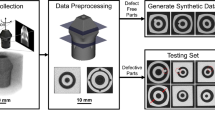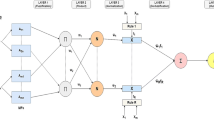Die design is heavily experience based and the die design process is an iterative procedure of trial and error in order to obtain a final die design for the successful manufacture of stampings. Most automotive industries use internal guidelines and past experience for die design. Even though powerful computer-aided design systems are being used in automotive industry, the lack of adequate analysis tools at the initial die geometry design stage hinders the die manufacturing process, and also necessitates lead times of the order of 5–30 weeks [1]. At the concept design stage, and during the initial die development process, the variations in geometry and process conditions are so large that it is prohibitively expensive to use 3D finite element analysis. The complexity of die design heuristic knowledge hinders the development and application of knowledge-based systems.
Hybrid intelligent systems are computer programs in which at least one of the constituent models simulates intelligent behaviour [2]. These models could be knowledge-based systems, artificial neural networks, fuzzy logic systems, etc. In this approach both artificial neural networks, knowledge-based systems and finite-element analysis (FEA) for modelling the design process are used. A simulation-based design approach [3] for the die design process is followed. Artificial neural networks (ANNs) are preliminary design tools which indicate the formability of the component geometry, for the selected process and material conditions. The ANN module is trained from FEA results for a generic set of component geometries, process conditions, and material properties. The final die design validation is carried out by FEA. The intelligent frame-work incorporates rules for material selection, process parameter selection and their modification.
Component geometry is a critical parameter which affects the manufacturability of the given part. Hence, an intelligent geometry handling module, which automatically modifies and optimises the geometry of the designed die, is implemented in the present system. Knowledge-based blackboard architecture is used for the integration of various analysis models such as CAD, FEA, and ANN, as an intelligent framework for die design [4]. The hybrid intelligent system provides an integrated decision support environment for simulation and analysis of the forming process, both during the initial die design phase and during the die tryout phase. The hybrid intelligent systems approach supports the capability for automatic evaluation of prospective die design for manufacturability, and performs automatic modification of design inputs. Applications of the hybrid intelligent system for die design are described together with a comparison with shop floor data.
Similar content being viewed by others
Author information
Authors and Affiliations
Rights and permissions
About this article
Cite this article
Pilani, R., Narasimhan, K., Maiti, S. et al. A Hybrid Intelligent Systems Approach for Die Design in Sheet Metal Forming. Int J Adv Manuf Technol 16, 370–375 (2000). https://doi.org/10.1007/s001700050168
Issue Date:
DOI: https://doi.org/10.1007/s001700050168




